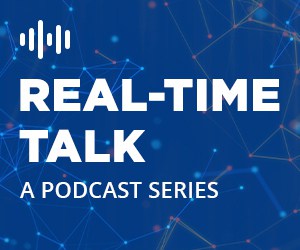
Analyzing data stores for 5G doesn’t have to be complex, but actions should be taken now to prepare for the onslaught of data that will arrive as 5G rolls out.
In an everything-connected world of ubiquitous smartphones, mobile operators have become a utility. This has led to fierce competition to try and stand out by serving the customer better, using ever-increasing amounts of data to provide insights that improve interactions and network quality.
But telecom operators’ data stores are becoming so vast that turning this information into actional insight is a major challenge. This problem is about to get a lot worse as next-generation 5G networks start to roll out across the world.
See also: 5G IoT Revenue To Skyrocket In Next Five Years
How have things gotten so bad, and what can be done to address the issue before the standalone version of 5G enables a host of high-bandwidth, low-latency applications?
Much of the problem is historical. While telecom firms have collected vast amounts of information, it often sits in silos on systems not designed to deal with such massive data, and operators have so far struggled to manage and analyze it. Complex queries are taking too long and trying to gain insights into customer usage patterns or network overload for example, is frustrating, to say the least.
The result: Telecom providers are only analyzing a small amount of their valuable data.
With 5G slated to enable multiple new applications, these problems will be magnified. There will be more data, and 5G technology will see information coming in much more rapidly than ever before.
5G: A revolution in the way networks are managed and run
5G also represents an overhaul in the way mobile networks are managed and run. Virtualization in the form of software defined networking (SDN) and network functions virtualization (NFV) have already entered the fray, giving mobile operators more control and allowing them to act dynamically when problems occur.
In 5G, mobile operators also plan to introduce ‘network slicing’ — the ability to ‘slice’ the network for different use cases or quality of service (QoS) requirements. Slicing the network becomes guesswork if the data isn’t accessible for analytics or simply takes too long to analyze to be relevant.
Adding to complexity, 5G will see a surge in internet of things (IoT) devices producing zettabytes of data per year. This will put pressure on networks, potentially resulting in network overload, while making it much harder to integrate data into stores.
At the same time, many IoT applications —such as autonomous vehicles and remote surgery — are considered ‘mission critical’, because if something goes wrong, lives are at stake. The onus is on operators to ensure they are able to manage and utilize data to ensure the networks underpinning these services are as robust as possible.
Outdated legacy data warehouses and other data management technology is simply not good enough to handle these huge amounts of data, and the problem is going to increase as the standalone version of 5G draws nearer. Operators must now manage network requirements and the storage of data and work out how they can handle petabytes — rather than terabytes— of data and learn how to properly analyze it.
Solving the 5G data challenge
Solving the 5G data challenge will provide huge benefits. When mobile operators are able to gain valuable insights from data, they can boost the customer experience and reduce churn, while improving troubleshooting and forecasting network capacity and demand more quickly and accurately.
One way of gaining valuable insights from vast amounts of data is by using a data acceleration platform. Such platforms work even when data is comprised of terabytes or petabytes of information by allowing telecom firms to compress it down by up to 10 times and analyze it very quickly.
The results speak for themselves. Take the example of Israel’s leading telecom operator Cellcom, which needed help to deliver better QoS and customer service, while keeping costs down in a market being squeezed by decline in traditional voice and data revenues.
Cellcom used an accelerated data warehouse to analyze the billions of raw base station events being logged every day to improve customer experience and identify network issues. As a result of this move, Cellcom QoS engineers are now able to pinpoint and resolve networking issues from an easy-to-use dashboard. One of the first issues they identified was a high drop-rate, which was caused by a hard handover from one macrocell to another. By using this data, the firm has now reduced dropped calls on problematic cells by 90%.
Another example is Thailand’s largest mobile network operator AIS. It wanted to differentiate itself by delivering an exceptional customer experience. But in order to do this, it needed to be able to translate billions of records of siloed data into improved network management and customer service.
Previously, AIS was using a legacy data warehouse solution that was unable to support growing volumes of data and required hours of preparation, restricting drill-down. To replace this, AIS implemented a data acceleration platform to accelerate analytics and enable new customer insights.
With the new system, AIS analyzes a much larger percentage of its data store, gaining a detailed picture of its customers, rather than an aggregated overview, so it can enrich its offerings.
Turning data into valuable insights
As these examples show, by combining the right strategy, technology and expertise, operators can manage their data and turn it into a competitive edge for improved QoS. With 5G’s standalone version coming soon, along with the multiple applications that will tax telecom operators even further, it’s time to take action now. This was urgent before the COVID-19 pandemic began, and with new traffic surges as people work from home, it’s needed more than ever to ensure optimal levels of insight into networks and prevent downtime.
As a foundation for 5G transformation, telecom operators must ensure the best strategy is in place, examining who has access to data. It’s about visibility: understanding which data is where, who controls it, and knowing how the data is set up. How can you tie in data from multiple stores to one location and perform analytics from there?
They need to assess how they integrate and manage data across the organization, making sure that the data is not only accessible but able to be analyzed. Analyzing data stores for 5G doesn’t have to be complex, but action should be taken now to set the right strategy in place to prepare for the onslaught of data that will arrive alongside widespread rollout of 5G.






